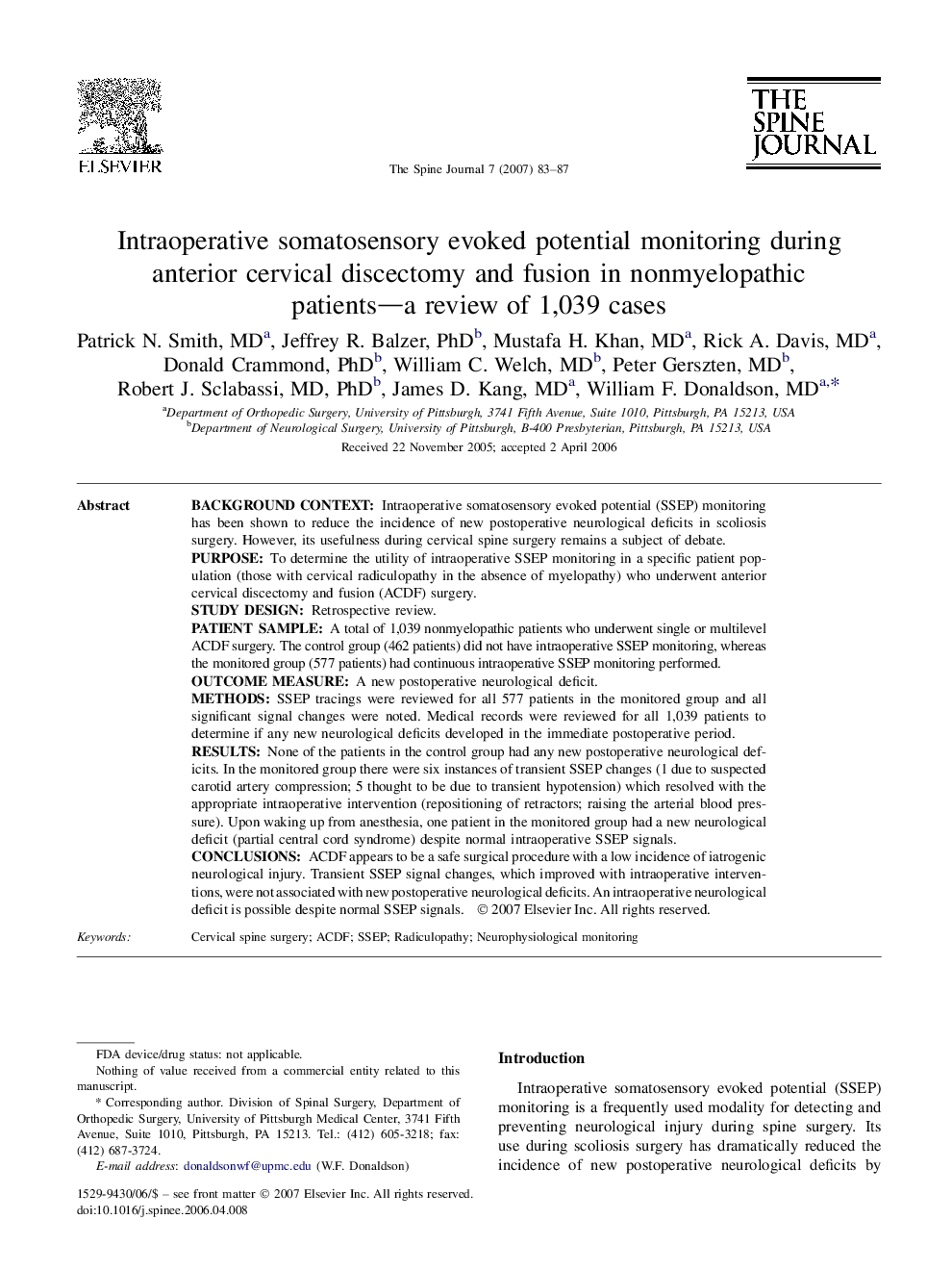| کد مقاله | کد نشریه | سال انتشار | مقاله انگلیسی | نسخه تمام متن |
|---|---|---|---|---|
| 4100228 | 1268677 | 2007 | 5 صفحه PDF | دانلود رایگان |

Background contextIntraoperative somatosensory evoked potential (SSEP) monitoring has been shown to reduce the incidence of new postoperative neurological deficits in scoliosis surgery. However, its usefulness during cervical spine surgery remains a subject of debate.PurposeTo determine the utility of intraoperative SSEP monitoring in a specific patient population (those with cervical radiculopathy in the absence of myelopathy) who underwent anterior cervical discectomy and fusion (ACDF) surgery.Study designRetrospective review.Patient sampleA total of 1,039 nonmyelopathic patients who underwent single or multilevel ACDF surgery. The control group (462 patients) did not have intraoperative SSEP monitoring, whereas the monitored group (577 patients) had continuous intraoperative SSEP monitoring performed.Outcome measureA new postoperative neurological deficit.MethodsSSEP tracings were reviewed for all 577 patients in the monitored group and all significant signal changes were noted. Medical records were reviewed for all 1,039 patients to determine if any new neurological deficits developed in the immediate postoperative period.ResultsNone of the patients in the control group had any new postoperative neurological deficits. In the monitored group there were six instances of transient SSEP changes (1 due to suspected carotid artery compression; 5 thought to be due to transient hypotension) which resolved with the appropriate intraoperative intervention (repositioning of retractors; raising the arterial blood pressure). Upon waking up from anesthesia, one patient in the monitored group had a new neurological deficit (partial central cord syndrome) despite normal intraoperative SSEP signals.ConclusionsACDF appears to be a safe surgical procedure with a low incidence of iatrogenic neurological injury. Transient SSEP signal changes, which improved with intraoperative interventions, were not associated with new postoperative neurological deficits. An intraoperative neurological deficit is possible despite normal SSEP signals.
Journal: The Spine Journal - Volume 7, Issue 1, January–February 2007, Pages 83–87